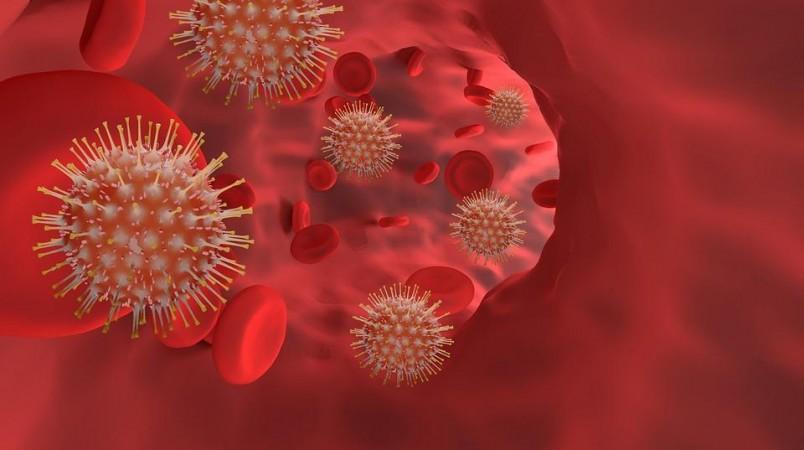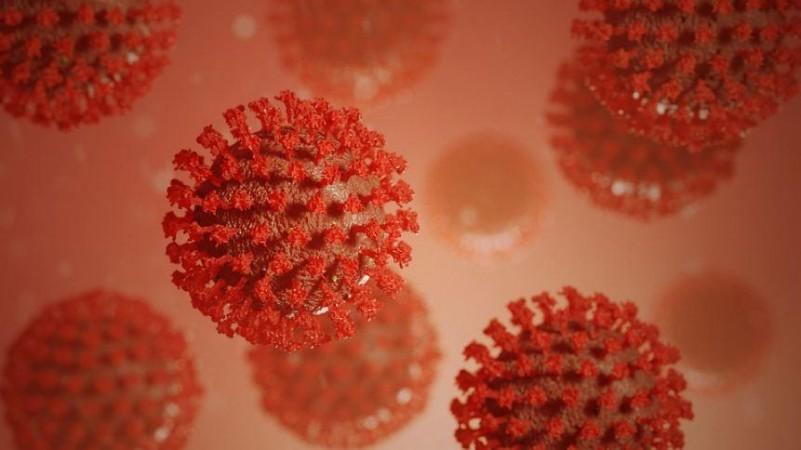The unyielding nature of the SARS-CoV-2 virus has prompted researchers across the world to study COVID-19 extensively. As a result, several factors and mechanisms that increase the severity of the infection, and the resulting damage, have been identified. The disease appears to have more tricks up its sleeve. Now, scientists have found that a body enzyme very similar to one found in rattlesnake venom could be driving mortality in patients with severe cases of COVID-19.
A multi-institutional study has found that a protein— secreted phospholipase A2 group IIA (sPLA2-IIA)—could be playing a silent role in severe inflammation among COVID-19 patients and worsening the severity and outcomes of the disease.
The study that involved two patient cohorts, learnt that the circulating levels of sPLA2-IIA were elevated in individuals with severe COVID-19, and around 10 times higher among the deceased. According to the authors, it could serve as a potential therapeutic target and help predict mortality risks.
"It's a bell-shaped curve of disease resistance versus host tolerance. In other words, this enzyme is trying to kill the virus, but at a certain point it is released in such high amounts that things head in a really bad direction, destroying the patient's cell membranes and thereby contributing to multiple organ failure and death," said Dr. Floyd Chilton, senior author of the study, in a statement. The research was published in the Journal of Clinical Investigation.
"Venom Coursing through the Body"

sPLA2-IIA is naturally found in the human body, and its concentrations are low in healthy individuals. It is known to play a vital role in the body's defense against bacterial infections. The enzyme destroys the membranes of the pathogens. Interestingly, sPLA2-IIA is similar to an enzyme that is present in the hemotoxin- neurotoxin (mostly hemotoxins) venom of rattlesnakes. The venom of these reptiles damage tissues and affect the circulatory system by destroying blood cells and skin tissues, and result in internal hemorrhaging.
Something similar happens within the body due to sPLA2-IIA. When the circulating levels of the activated enzyme are high, it has the ability to "shred" the membranes of vital organs in the body, according to Dr. Chilton. Explaining its damaging ability, he said, that it "shares a high sequence homology to the active enzyme in rattlesnake venom and, like venom coursing through the body, it has the capacity to bind to receptors at neuromuscular junctions and potentially disable the function of these muscles."
Dr. Chilton has been studying the enzyme for over 30 years. He approached his fellow authors with the idea of analyzing lipids and metabolites in the blood samples of individuals with COVID-19. "The role of the sPLA2-IIA enzyme has been the subject of study for half of a century and it is possibly the most examined member of the phospholipase family," he explained. Researchers from the University of Arizona, Stony Brook University, and Wake Forest University School of Medicine, collaborated for the research.
Analyzing Blood Samples of COVID-19 Patients

For the study, the authors collected stored plasma samples of 127 COVID-19 patients who had been hospitalized at Stony Brook University between January and July 2020. Their charts and other clinical data were analyzed. These patients formed the first cohort. The second cohort comprised a total of 154 patients samples obtained from Banner University Medical Center and Stony Brook University between January and November 2020.
Dr. Chilton admitted that the cohorts were relatively small. However, he noted that it was a "heroic effort" to put them together and obtain all related clinical parameters from every patient under difficult circumstances. "As opposed to most studies that are well planned out over the course of years, this was happening in real-time on the ICU floor," he pointed out.
Using machine learning algorithms, the authors were able to evaluate thousands of patient data points. In addition to conventional risk factors such as pre-existing conditions, age, body mass index, among others, the scientists also concentrated their analysis on biochemical enzymes, along with lipid metabolite levels of patients.

Dr. Justin Snider, lead author of the study, highlighted, "In this study, we were able to identify patterns of metabolites that were present in individuals who succumbed to the disease. The metabolites that surfaced revealed cell energy dysfunction and high levels of the sPLA2-IIA enzyme. The former was expected but not the latter."
High Levels of 'Shredding' Enzyme
With the knowledge about the elevated levels of sPLA2-IIA, the team employed the same machine learning techniques to develop a decision tree (a predictive modeling approach) to ascertain COVID-19 mortality. Generally, healthy individuals have circulating levels of the sPLA2-IIA enzyme of around half a nanogram per milliliter.
It was found that COVID-19 was fatal in 63 percent of the patients who had severe cases of the disease. Alarmingly, the levels of sPLA2-IIA were equal to or higher than 10 nanograms per milliliter in them. "Many patients who died from COVID-19 had some of the highest levels of this enzyme that have ever been reported," stated Dr. Chilton.

Dr. Charles McCall, lead author of the study, also referred to the sPLA2-IIA as a "shredder". This is because of its known role in several inflammatory conditions such as bacterial sepsis, cardiac shock, and hemorrhagic shock among others.
Long COVID has been found to greatly restrict the physical abilities of individuals who were active before contracting the disease and recovering from it. Talking about the future course for the research, Dr. Chilton concluded, "The question we are investigating now is: If this enzyme is still relatively high and active, could it be responsible for part of the long COVID outcomes that we're seeing?"

















